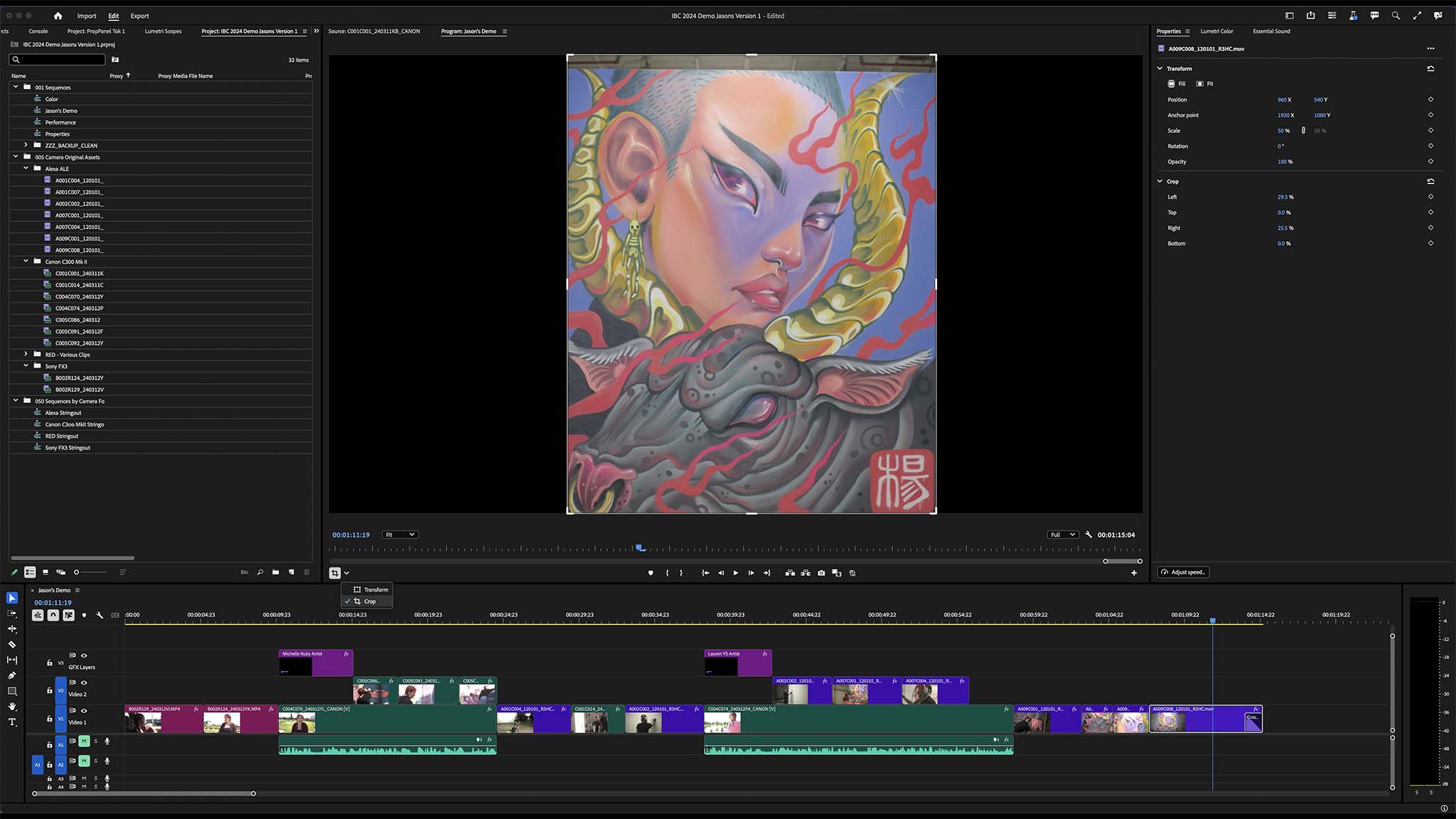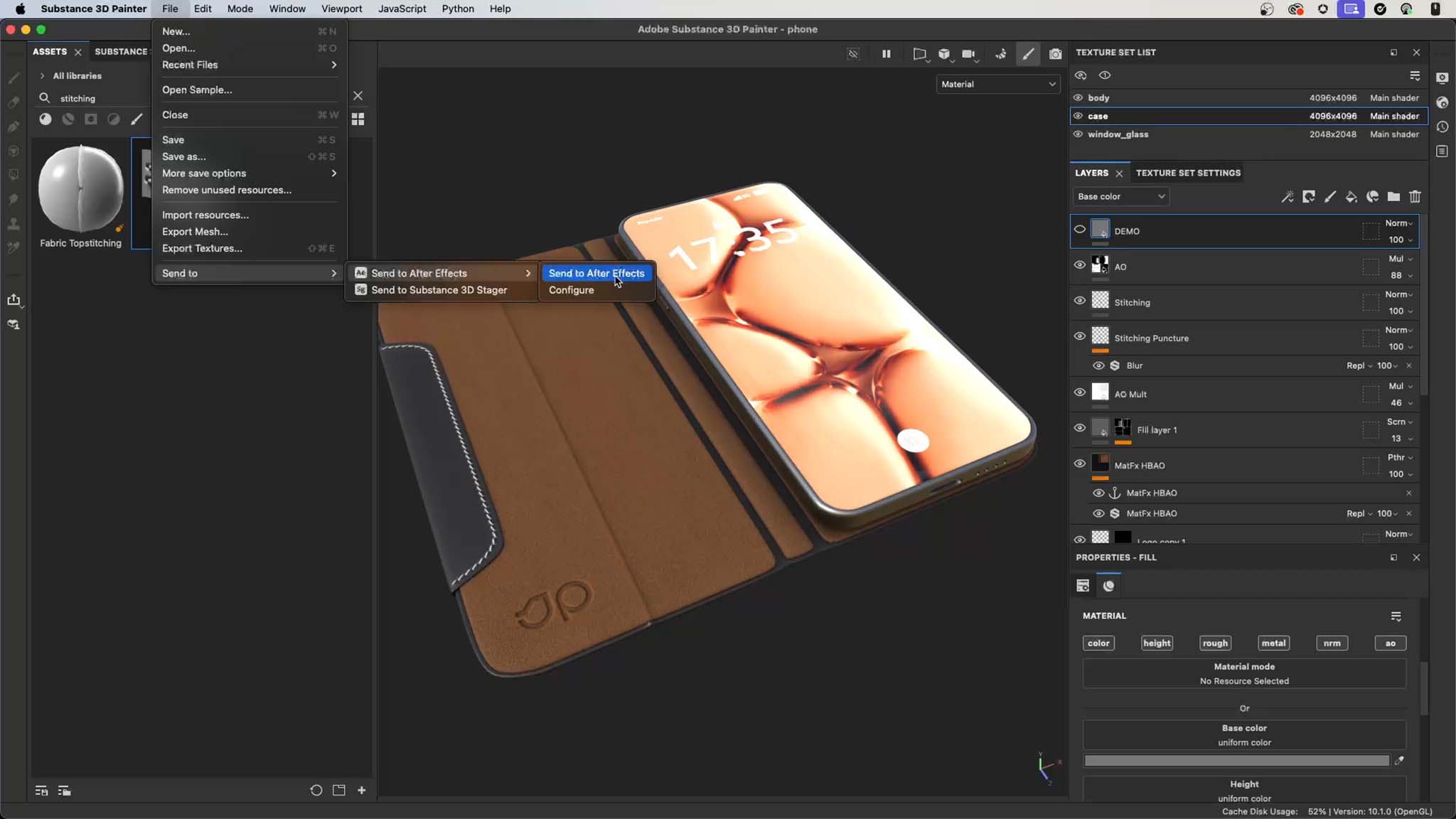
What you need to know
- Ahead of the International Broadcasting Convention (IBC) 2024, Adobe announced several new Premiere Pro, After Effects, and Firefly features that should save users time in their workflows.
- Premiere Pro gets improved color management abilities, while After Effects will support Substance 3D assets, ultra-realistic shadow casting, and faster performance with a hardware-accelerated UI.
- Enterprise customers gain access to Firefly’s Enhance Speech API (beta), which repairs dialogue, removes background noise, and can even translate dialog to different languages with believable visual lip-syncing using AI.
As a video editor with years of experience under my belt, I must say that Adobe has truly outdone itself with these latest updates! The new features and improvements in Premiere Pro and After Effects are nothing short of revolutionary.
2024 sees the International Broadcasting Convention (IBC) happening at the RAI Exhibition and Convention Centre in Amsterdam, Netherlands, from September 13 to September 16. Prior to this event, Adobe has unveiled significant enhancements for Premiere Pro (Beta), After Effects, and Firefly Services (beta). Here’s a summary of these updates.
Color management gets a whole lot easier in Premiere Pro (Beta)

- Adobe Premiere Pro (Beta)
- Premiere Color Management: This system works in the background to create automatic tone-mapping of RAW and log video after dropping clips in the timeline from basically any camera. It doesn’t require LUTs, either. Color accuracy is far better now when you send projects between Premiere and After Effects and back via Dynamic Link. Many effects, including Lumetri color correction, are now color-space aware. There are six high-fidelity presets to choose from:
- Direct Rec. 709 (SDR)
- Direct HLG (HDR)
- Direct PQ (HDR)
- Wide Gamut (Tone Mapped)
- Wide Gamut (Minimal Tone Mapping)
- Wide Gamut (No Tone Mapping)
- Properties Panel: A new context-sensitive Properties Panel has been added, filled with the most popular and needed tools. This includes a built-in crop effect with new on-screen direct crop manipulation controls. Users can also adjust the properties of multiple clips at once.
- Native Format Support: Premiere Pro is using the industry standard ACEScct wide gamut color space. Users can disable all color management from custom LUT workflows, easily switch from Rec709 SDR to PQ or HLG HDR, support RAW video (RED, ARRI, Sony, Canon, ProRes RAW), and support Log format (RED, ARRI, Sony, Canon, Panasonic, Fujifilm, Nikon, Leica, DJI, GoPro).
- Improved Performance: Users can quickly apply effects and features faster than before. Plus, the program now offers three times faster ProRes rendering to make exports a lot quicker.
- Refreshed UI: There are now two dark modes, a light mode, and a high contrast mode. The program also has cleaner fonts for better legibility as well as visual continuity with other Creative Cloud apps.
- Premiere Color Management: This system works in the background to create automatic tone-mapping of RAW and log video after dropping clips in the timeline from basically any camera. It doesn’t require LUTs, either. Color accuracy is far better now when you send projects between Premiere and After Effects and back via Dynamic Link. Many effects, including Lumetri color correction, are now color-space aware. There are six high-fidelity presets to choose from:
After Effects now works seamlessly with Substance 3D and has better performance too

- Adobe After Effects
- Enhanced 3D Workflows: This major improvement allows users to seamlessly send Substance 3D assets into After Effects, meaning 3D workflows can blend into live-action footage and 2D motion design faster than before. Shadow Catchers even allows users to create realistic shadows on 3D elements while depth mapping encodes distance information to allow realistic camera behavior to these 3D elements with post-processing effects like depth-of-field, blur, and fog.
- Rapid Motion Design Creation: There are now 33 new animation presets including charts, graphs, numeric counters, animated speed-lines and more.
- Improved performance: Changes allow for much faster playback responsiveness while three times faster ProRes rendering makes the export process much quicker. Hardware-accelerated AVC and HEVC make H.265 clips work faster and playback smoother. The program also supports more cameras, including Sony, Canon, RED, and Arri. A significant Dynamic Link update allows projects sent between After Effects and Premiere Pro to have better color. Additionally, hardware-accelerated UI/UX on Windows significantly speeds up activity by up to four times, depending on your hardware configuration.
- Refreshed UI: A new look to the interface brings cleaner fonts and a more modern design. Users get to choose between two dark modes, a light mode, and a high-contrast mode. Plus, the program is designed to look more similar to other Creative Cloud apps.
- Connection with Substance 3D: Users also get access to 20,000 fully licensed Substance 3D materials, including models and environment lights.
Easily improve audio quality and create believable translations into different languages

- Adobe Firefly Services (beta)
- Enhanced Speech API (beta): AI now powers video and audio processes to repair poorly recorded dialogue, remove obtrusive background noise, and improve overall audio quality. This program can even run batch processing on RAW audio files to save users time.
- Dubbing & Lip Sync API & UI (beta): Allows for the translation of dialogue into different languages while still sounding like the original speaker. On top of that, it even creates a believable visual lip sync.
Pros for editors and cons for the dubbing industry

Adobe has enhanced its video editing software suites by simplifying the process of working with footage from various sources without color discrepancies. The Premiere Pro Beta now supports a broad range of color space for Log (used in some modern GoPro cameras) and RAW-format videos, making it easier to combine with After Effects while preserving high dynamic ranges for colors and brightness. Managing colors can be challenging for new video editors, but Adobe is making importing files with different formats less troublesome.
As a tech enthusiast, I can’t stress enough the importance of upgrading Adobe After Effects to include hardware acceleration for its UI on Windows systems. This update will significantly reduce slowdowns experienced while working on intricate projects with thousands of keyframes, ensuring smoother and more efficient workflows.
This improvement is expected to greatly streamline the process for creators who produce long videos, potentially paving the way for an efficient ARM-native version of Adobe After Effects to run smoothly on Windows devices powered by ARM processors in the future.
Personally, the color correction bumps take a backseat to the continued improvements to Adobe’s audio suite, with its enhanced speech API carrying over the same kind of benefits found in Adobe Podcast that we’ve used in our own Windows Central Podcast to clean up background noise and generally improve quality.
Opting for Adobe’s generative AI for dubbing and lip sync could spark debate, as it potentially eliminates the requirement of employing native speakers from other regions. However, I’m looking forward to experimenting with it once it’s launched. At present, I plan on revisiting fundamental tutorials on color correction since it’s still a challenging landscape for me. It’s encouraging to observe Adobe improving the process; my only request is that they release it without ARM64 emulation!
Read More
- EUR JPY PREDICTION
- TRB PREDICTION. TRB cryptocurrency
- DF PREDICTION. DF cryptocurrency
- ZEN PREDICTION. ZEN cryptocurrency
- EUR RUB PREDICTION
- How to Get Radzig Kobyla’s Longsword in Kingdom Come: Deliverance 2
- Kingdom Come: Deliverance 2 console commands – All KCD2 cheat codes and how to use them
- ASTR PREDICTION. ASTR cryptocurrency
- POL PREDICTION. POL cryptocurrency
- ICP PREDICTION. ICP cryptocurrency
2024-09-10 16:11